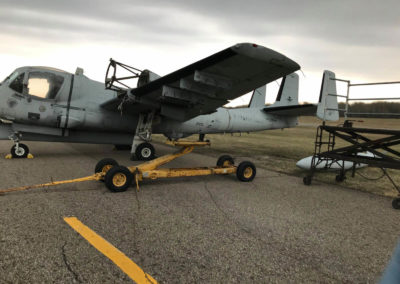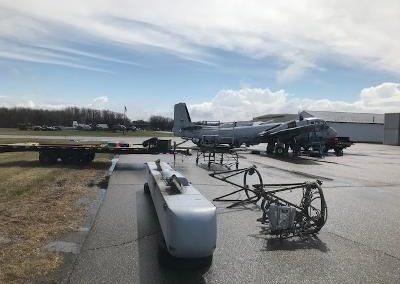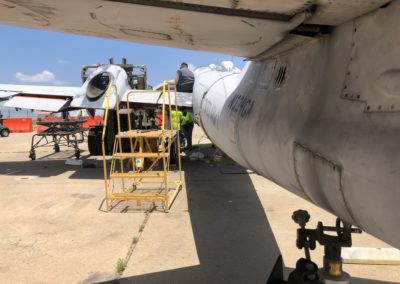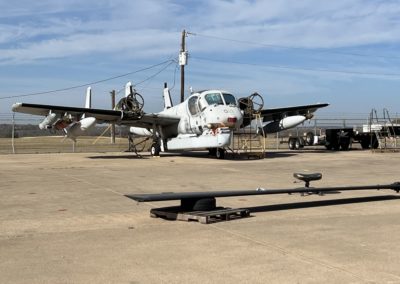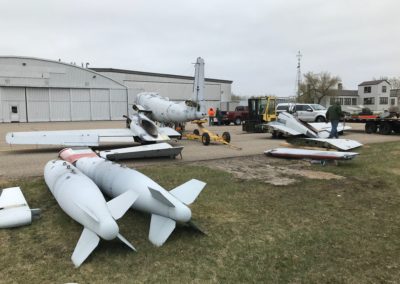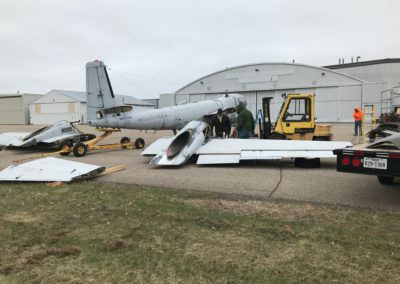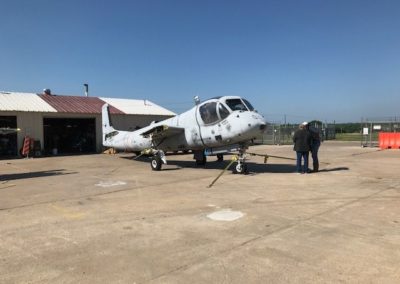OV-1 Mohawk
Originally developed as a visual and photographic aircraft, the strides made in the field of airborne tactical reconnaissance repacked the airframe with sensors and other electronic equipment.
Warbird Overview
The Mohawk was designed for the U.S. Army and Marine Corps, the first flown in April 1959. Originally developed as a visual and photographic aircraft, the strides made in the field of airborne tactical reconnaissance repacked the airframe with sensors and other electronic equipment. The U.S. The U.S. Army retired the last of its Mohawks in 1996, used by the Argentinian army continued until 2015.
ABOUT THE OV-1 Mohawk
The Mohawk was designed for the U.S. Army and Marine Corps, the first flown in April 1959. Originally developed as a visual and photographic aircraft, the strides made in the field of airborne tactical reconnaissance repacked the airframe with sensors and other electronic equipment. The U.S. The U.S. Army retired the last of its Mohawks in 1996, used by the Argentinian army continued until 2015.
Fact #1
This unique intelligence-gathering aircraft served in the US Army twice and with the Israeli Air Force, where it was referred to as “A Bat.”
Fact #2
This Grumman OV-1 Mohawk is one of two warbirds that served with a foreign government.
Fact #3
This aircraft last served at Fort Hood here in Texas.
Specification: Grumman OV-1D Mohawk
Type: tactical reconnaissance aircraft.
Crew: 2
Length: 41 ft 0 in
Wingspan: 48 ft 0 in
Height: 12 ft 8 in
Empty weight: 12,054 pounds
Gross weight: 15,544 lb (7,051 kg) (Normal take-off weight, IR mission)
Max takeoff weight: 18,109 lb (8,214 kg) (SLAR mission)
Fuel capacity: 276 US gal (230 imp gal; 1,040 L) internal fuel
Powerplant: 2 × Lycoming T53-L-701 turboprops, 1,400 shp (1,000 kW) each
Propellers: 3-bladed Hamilton Standard Type 53C51-27 constant-speed propellers, 10 ft 0 in (3.05 m) diameter
Performance
Maximum speed: 305 mph (491 km/h, 265 kn)
Cruise speed: 207 mph (333 km/h, 180 kn)
Stall speed: 84 mph (135 km/h, 73 kn)
Never exceed speed: 450 mph (720 km/h, 390 kn)
Range: 944 mi (1,519 km, 820 nmi) with external tanks
Endurance: 4.35 hr
Service ceiling: 25,000 ft (7,600 m)
Take-off to 50 ft (15 m): 1,175 ft (358 m)
Landing run from 50 ft (15 m): 1,060 ft (320 m)
Armament: Machine gun pods, rockets, etc. Air Force objected to light attack role and weapons were removed restricting the aircraft to intelligence gathering.
This Grumman OV-1 Mohawk (Army Serial 69-17021) was constructed in 1969 and delivered to the US Army in 1970. The Mohawk was primarily an intelligence-gathering aircraft with numerous sensors for detecting activity on the ground.
Following a surprise attack in the Arab-Israeli War (Yom Kippur War) in October 1973, Israel began looking for better intelligence-gathering aircraft. In 1974, the US converted two OV-1s (68-16993 and 69-17021) to EV-1Es at Grumman in Stuart, Florida, and loaned them to the Israeli Air Force under a program called Apache Nickle Grass. This Mohawk was one of those two aircraft. The aircraft were flown to Israel via Goose Bay, Sondrestrom, Keflavic, Upper Heyford, Torrejon, Naples, Athens, and finally, Nod (Ben Gurion Airport) by Maj. Dick Urick, Capt. Dick Wolfe, and SSG Mike Castro. While in Israel they carried IAF markings (4X-JRA) and were operated in a reconnaissance/ ELINT role. There is no Hebrew word for Mohawk and they were nicknamed Atalef – Hebrew for “bat.” They were operated for 8 years and eventually returned in April 1984 by US Air Force transports. In 1984, they were returned to Grumman in Florida for restoration to OV-1D standards.
After refurbishment, it was operated in Germany and the Gulf War in 1991. The final base was Fort Hood, Texas. The aircraft was declared surplus by the US Army and sold in January 1993.
The American Wings Air Museum (AWAM) in Minneapolis acquired the aircraft. It was disassembled at Fort Hood and brought to AWAM and reassembled. It carried civil registration N134xx and \ flew in 1995. The aircraft was named Most Original Warbird at Oshkosh in 1996.
The aircraft last flew in 2004 and was eventually sold to Paul Pefley of Mohawk Technologies. In 2016, the engines and propellers were removed and trucked to Florida. Pefley donated the aircraft to the Fort Worth Aviation Museum. A crew disassembled and brought the airplane to Fort Worth from Minnesota in April 2021.
Good shape and will need a good wash and brush down.
Note: Scheduling is always a moving target depending on weather and workload. All schedules are subject to changes.
Become a Member!
FLIGHT SIMULATOR
HOURS
Saturday: 9AM-2PM
Sunday: 11AM-3PM
